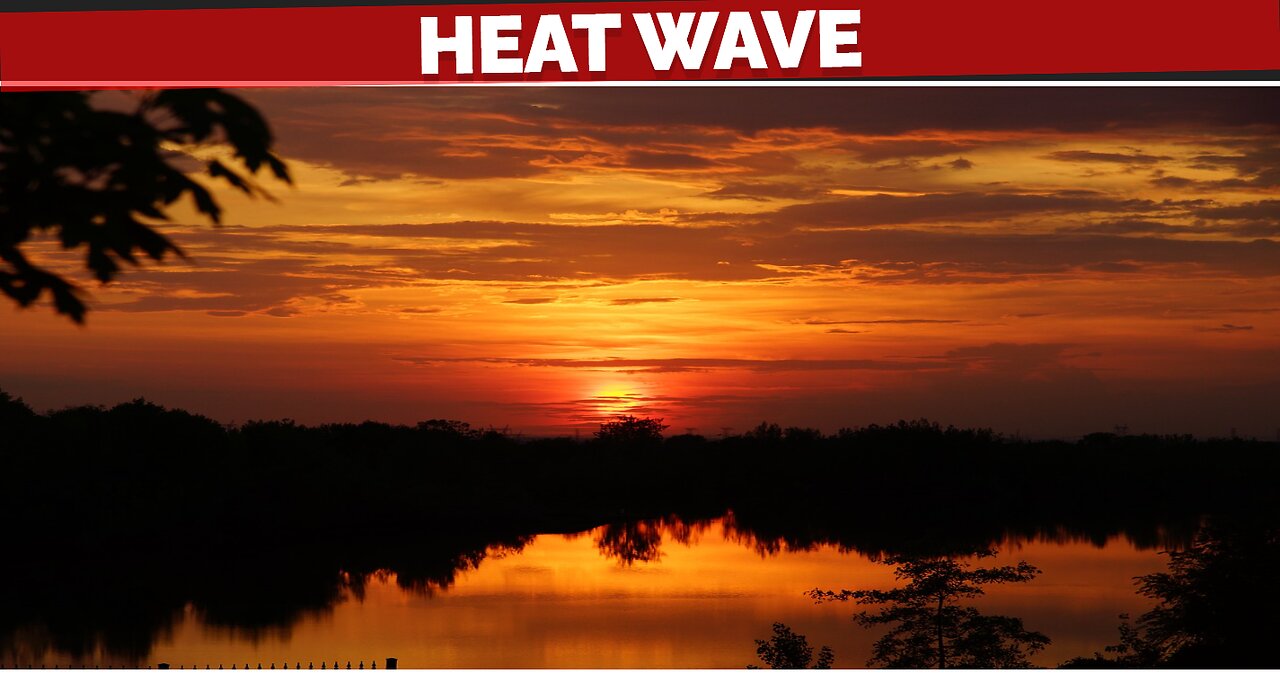Premium Only Content

Heat wave in India and Pakistan
Dramatic visuals of scorching landscapes in India and Pakistan.
Narrator: The South Asian summer is known for its heat, but 2022 brought unprecedented scorching temperatures to India and Pakistan. This wasn't just a heatwave; it was a climate crisis unfolding in real time. In this video, we'll delve into the causes, consequences, and potential solutions for this scorching threat.
The Brutal Reality
Scene: Switch to split-screen visuals. Left side shows weather maps with high temperature zones, right side shows people struggling in the heat (street vendors, farmers working in fields).
Narrator: The heat arrived early, in March, and lingered into April. Temperatures soared past 45°C (113°F) in several cities. This wasn't just uncomfortable; it was deadly. Heatstroke became a common threat, particularly for vulnerable populations like outdoor workers and those without access to air conditioning. The scorching sun, combined with a devastating drought, crippled agricultural production. Wheat harvests, crucial for both nations, were significantly reduced.
The Cause: Climate Change's Fingerprints
Scene: Animation or graphics depicting the greenhouse effect and rising global temperatures.
Narrator: Scientists are clear: climate change is the driving force behind these extreme weather events. A warming planet leads to more frequent and intense heatwaves. This particular event was further amplified by a La Niña weather pattern, but the overall trend is undeniable. The frequency and severity of heatwaves will only increase without significant action to curb greenhouse gas emissions.
Consequences Beyond the Heat
Scene: Show visuals depicting power outages, hospital scenes, and potential social unrest.
Narrator: The scorching temperatures had a ripple effect far beyond physical discomfort. Power grids struggled to keep up with the increased demand for electricity for cooling, leading to widespread blackouts. Hospitals saw a surge in heat-related illnesses, straining healthcare systems. The economic impact was significant, with losses in agriculture and disruptions to businesses. There's also a concern for social unrest, as extreme weather events can exacerbate existing social tensions.
A Call to Action: Adaptation and Mitigation
Scene: Show split-screen visuals. Left side shows people taking precautions (staying hydrated, wearing protective clothing), right side shows renewable energy projects (solar panels, wind turbines).
Narrator: We cannot control the weather, but we can adapt and mitigate the impact of these scorching events. Individuals can take simple precautions: staying hydrated, wearing protective clothing, and limiting outdoor activity during peak heat hours. On a larger scale, investments in heat-resistant infrastructure and early warning systems are crucial. But the most important action is tackling climate change head-on. This means transitioning towards renewable energy sources, improving energy efficiency, and reducing overall greenhouse gas emissions.
Conclusion
Scene: Show hopeful visuals of people working together and nature scenes.
Narrator: The heatwave in India and Pakistan served as a stark reminder of the climate crisis we face. By working together, adapting to changing weather patterns, and mitigating climate change, we can build a more resilient future for all. The scorching heat may be a reality, but a sustainable future is within our reach
-
 53:13
53:13
BonginoReport
4 hours agoJFK Files Drop (Ep.163) - 03/19/2025
111K178 -
![🔴[LIVE TRADING] Market Open: Fed Interest Rate Decision Day || The MK Show](https://1a-1791.com/video/fww1/0f/s8/1/w/q/e/u/wqeuy.0kob-small-The-MK-Show-Mar.-19th.jpg)
Matt Kohrs
12 hours ago🔴[LIVE TRADING] Market Open: Fed Interest Rate Decision Day || The MK Show
21.5K2 -
 1:12:15
1:12:15
Dear America
10 hours agoSHOCKING JFK Files Revelations + Harry Sisson In Trouble & Elon Saves Stranded Astronauts!
39.9K9 -
 46:12
46:12
Randi Hipper
1 hour agoBREAKING BITCOIN NEWS!
8.55K -
 LIVE
LIVE
Wendy Bell Radio
6 hours agoWELCOME HOME
9,927 watching -
 16:10
16:10
T-SPLY
3 hours agoElon Musk Is Still Being Attacked After Saving Stranded Astronauts
16.9K14 -
 13:31
13:31
IsaacButterfield
6 hours ago $0.39 earnedFaking Down Syndrome For OnlyFans: DISGUSTING
11.7K8 -
 4:12
4:12
Kirill MultitoolOfficial
6 hours agoBEST Bushcraft HACKS and Survival SKILLS in the wilderness
14K1 -
 1:29:41
1:29:41
JULIE GREEN MINISTRIES
4 hours agoLIVE WITH JULIE
130K193 -
 1:31:36
1:31:36
Jeff Ahern
2 hours ago $1.18 earnedNever Woke Wedensday with Jeff Ahern
24.5K